How to Photograph Reflections to Create Stunning Images
Here are a few tips for how to photograph reflections in water.
If you enjoy landscape photography and taking photos of reflections as you travel, this is a helpful basic photography technique to know.
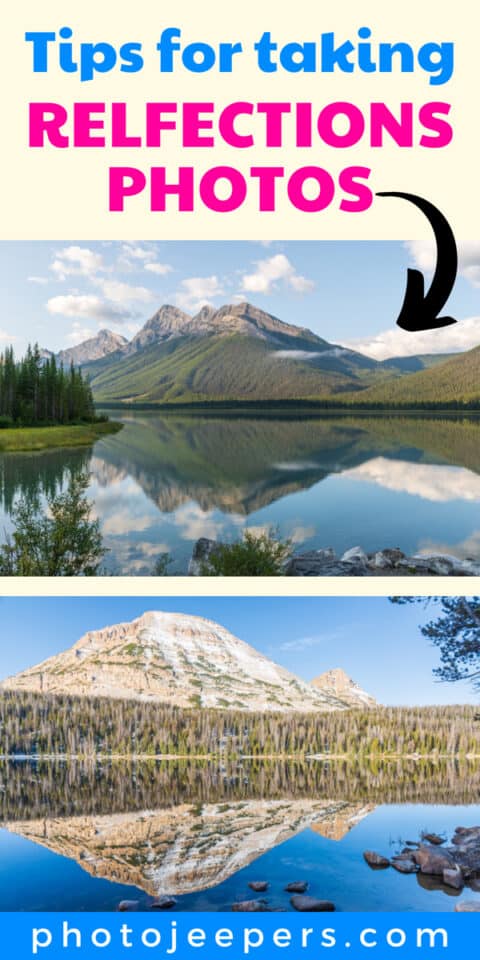
Here’s what you’ll learn about photographing reflections in water:
- Camera Gear for Reflection Photography
- Research Good Reflection Locations
- Best Time of Day to Photograph Reflections
- Composition Techniques for Photographing Reflections in Water
- Why a Tripod is Necessary for Reflection Photography
This site contains affiliate links which means WE may receive commissions for purchases made through these links. We only provide links to products we actually use and/or wholeheartedly recommend! As an Amazon Associate, we earn from qualifying purchases. Read the full Disclosure Policy.
Camera Gear for Landscape Photography
- Tripod: take a look at these compact and lightweight travel tripods!
- Camera Bag: protect your camera from sand and water → We use Lowepro camera backpacks for outdoor photography.
- Neutral density filter: to compensate for variance of light you’ll need to use a neutral density filter. → Check out the Kase magnetic filters we use!
- Camera cleaning kit: remove dust or water that WILL get on your lens. NOTE: this is not for cleaning the sensor.
- Memory cards: purchase name brand memory cards since you’re trusting your images to the card! → We use Lexar and Sandisk!
- External hard drive: copy photos to a portable external hard drive ‘just in case’.
- Headlamp: use when taking sunrise and sunset photos!
Camera Gear at B&H Photo
TIPS TO PHOTOGRAPH REFLECTIONS IN WATER
Take a look at these reflections photograph tips to inspire you to take your own reflections photos!
Research Good Reflections Locations
Capturing a stunning reflection image first requires the discovery of an ideal location. This is where the researcher in you pays off. Location is the foundation.
The calm waters of a lake or a slow moving river are ideal to capture a reflection.
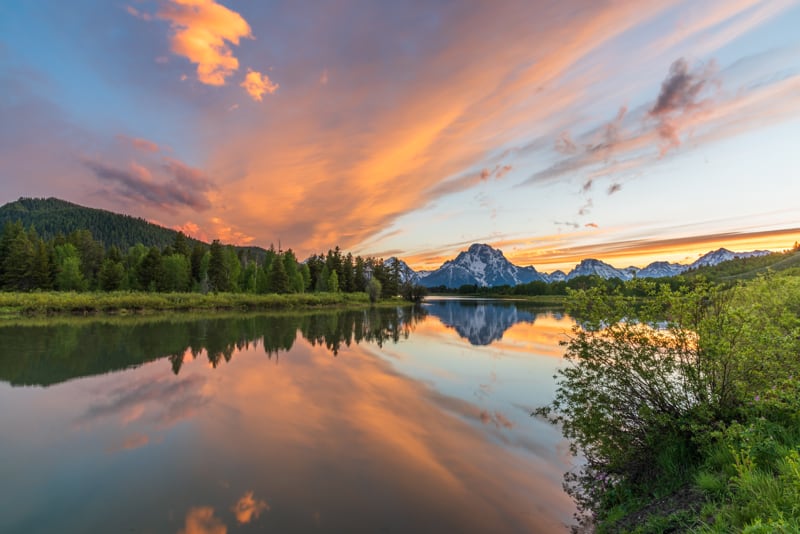
We knew from research that Oxbow Bend is a prime photo spot at Grand Teton for reflections in the Snake River.
Luckily for us, one outing at sunset had all the right elements to create a photo that just pops! The location, time of day, colors and still water. But those elements don’t always come together when you want to photograph a scene.
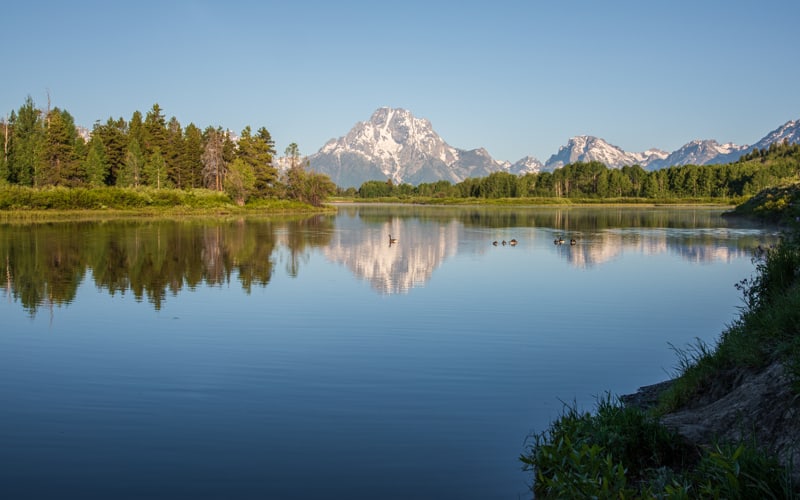
In the image above, the river wasn’t calm so the reflection wasn’t crystal clear. The mountains, landscape and geese in the water created a tranquil scene worth photographing.
Many times you work with what it’s in front of you to create a memorable image.
Best Times to Photograph Reflections in Water
The best reflections are captured when the air is cool and there is no wind.
MORNING: Golden hour photography in the morning around sunrise and in the evening around sunset are my favorite times to photograph reflection images.
The water is cooler, the light is soft, and there are fewer people out and about.
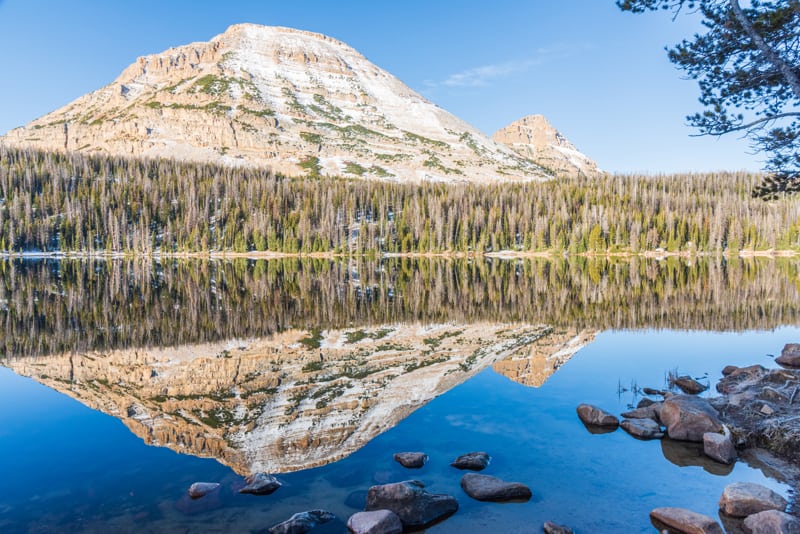
The best time for us to photograph Mirror Lake in Utah – the name perfectly describes this lake – is early morning in late fall.
The high elevation lake usually has some snow at this time and it’s very cold in the morning. This usually deters the people who want to fish or paddleboard on the lake so we can take photos without people!
EVENING: As the sun goes down, so does the air temperature, and water becomes still. Watch for locations where you can photograph light upon a river, lake, fountain or even a puddle after rain.
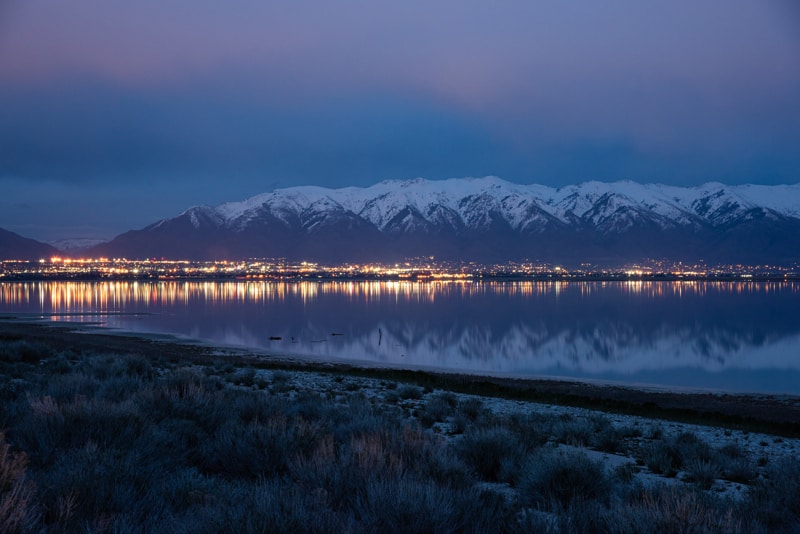
On our way home from Antelope Island State Park one evening, we saw the lights of Salt Lake City, Utah reflecting into the Great Salt Lake. The snow-capped mountains and city lights reflecting into the water make a wonderful photo.
WINTER: We knew that water collected on the Bonneville Salt Flats in Utah during the winter. Our hope was to photograph the reflection of the milky way upon the water.
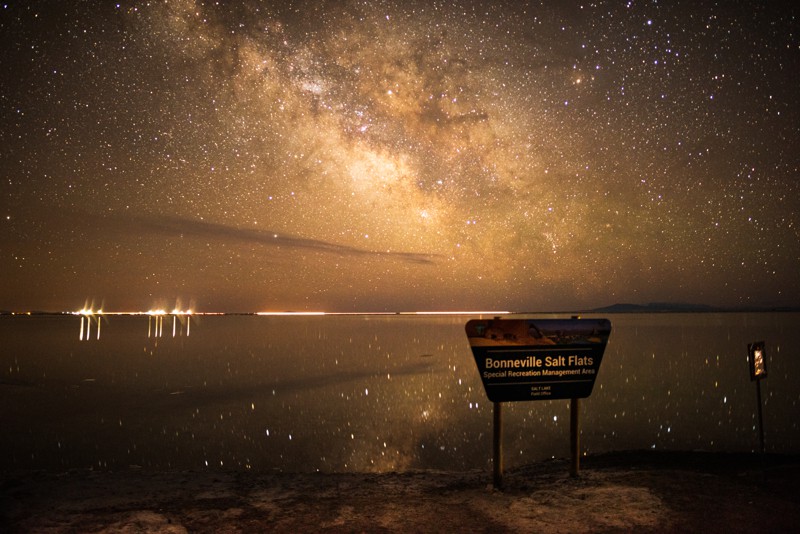
Being winter, the air and water were cool, and we lucked out with no wind! The resulting image was a success.
Composition Techniques for Photographing Reflections in Water
Composition can make or break the image you want to create. What you see with your eye can be greatly degraded with a poor composition.
Photographing the reflection in water is the main focus so compose the majority of your frame with the subject and reflected surface.
Fill the Frame
The image above is from the same trip to the Salt Flats where we photographed the Milky Way at night. We stayed hoping to see a wonderful sunrise reflection – and we did!
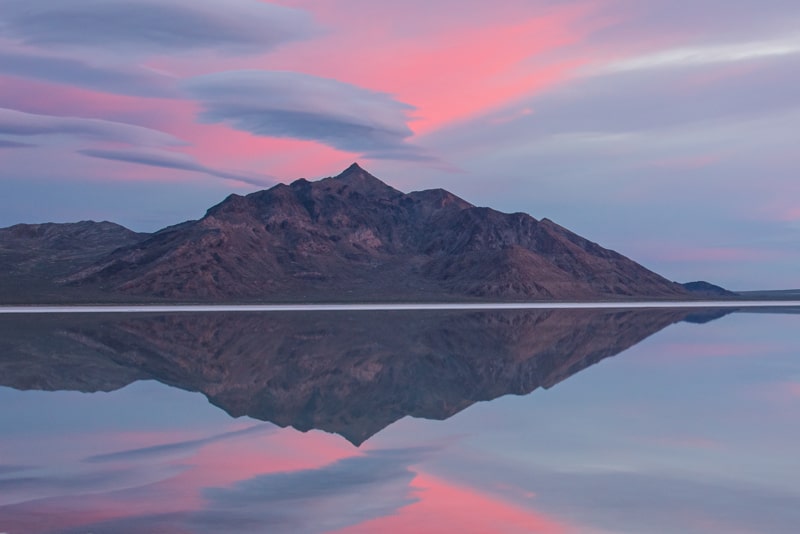
Using the fill the frame technique focused on the part of the scene and reflection that had the most interest with the colorful sky.
Foreground
I love to use rocks in the water or a log on the bank or shore. Use those element to drawn the eye to the point where reality and reflection meet.
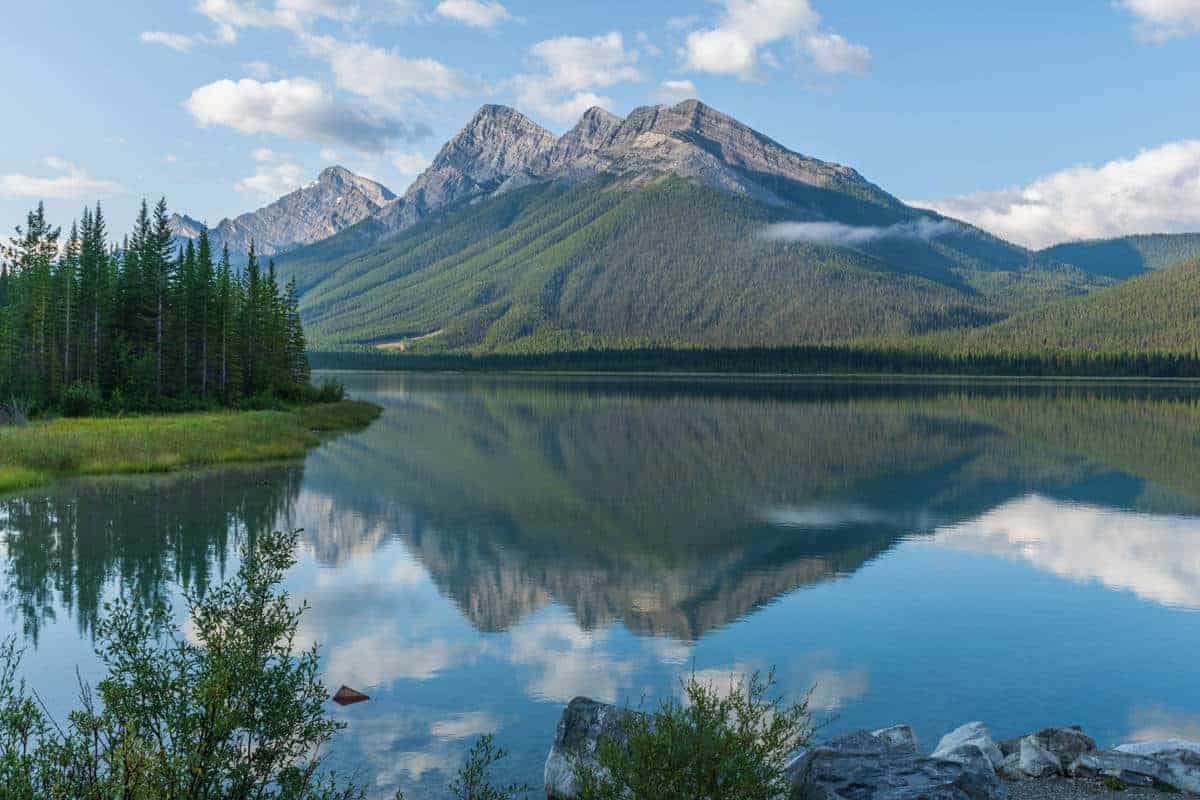
Adding a bit of foreground also provides depth to the scene. A photo with layers (foreground, midground and background) will add a 3-dimensional effect, instead of looking flat.
WHY A TRIPOD IS IMPORTANT FOR REFLECTION PHOTOGRAPHY
Use a sturdy tripod to capture sharp, crisp images. A tripod reduces camera movement that inevitable happens when you hand hold your camera.
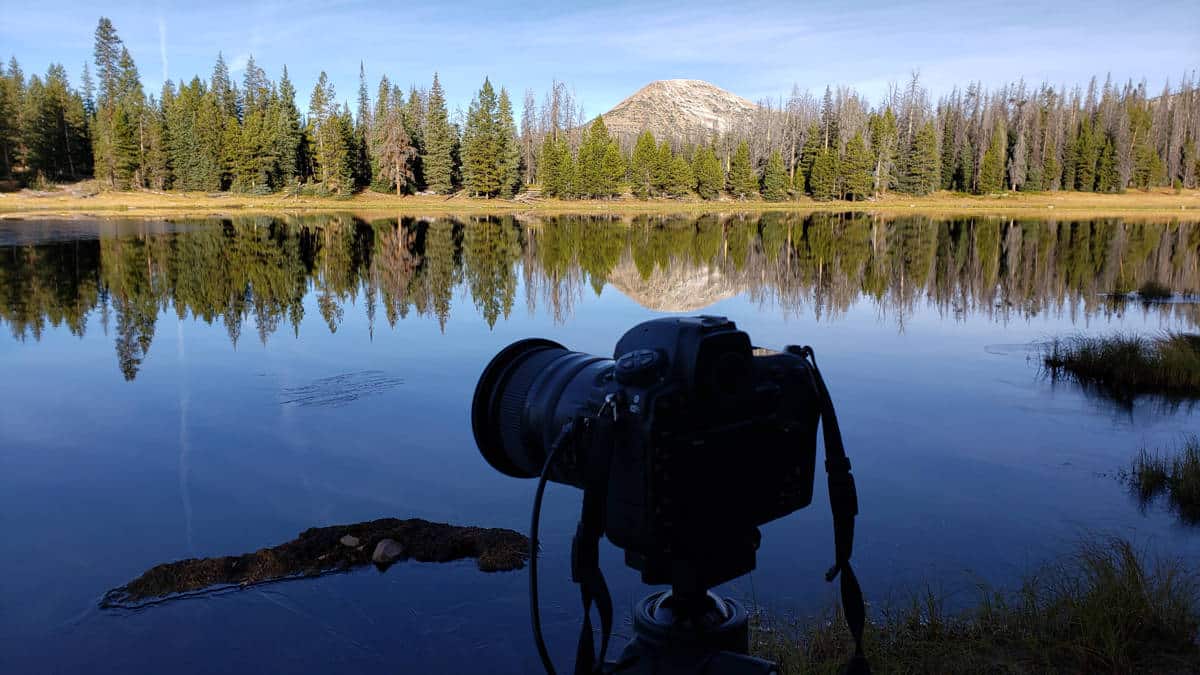
You don’t want the tack sharp reflection you see in the water to have any bit of blur due to camera shake.
We use a remote shutter release along with the tripod to limit further physical contact when taking the shot and maximize sharpness. You can also use the timer on your camera to do this.
AMAZON Landscape Photography Books:


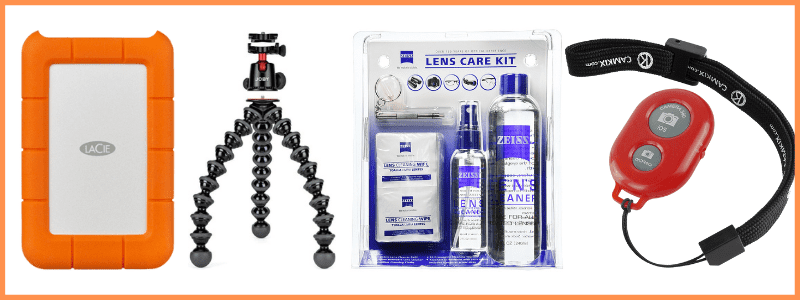
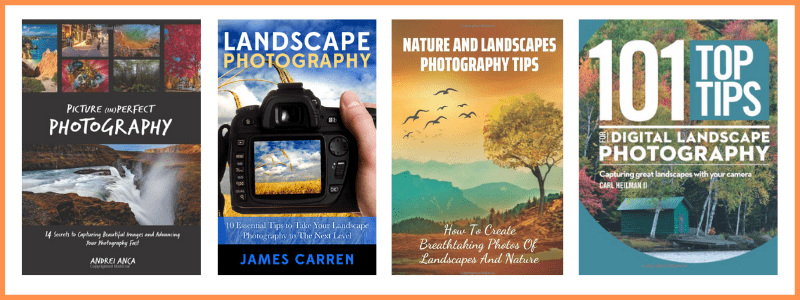

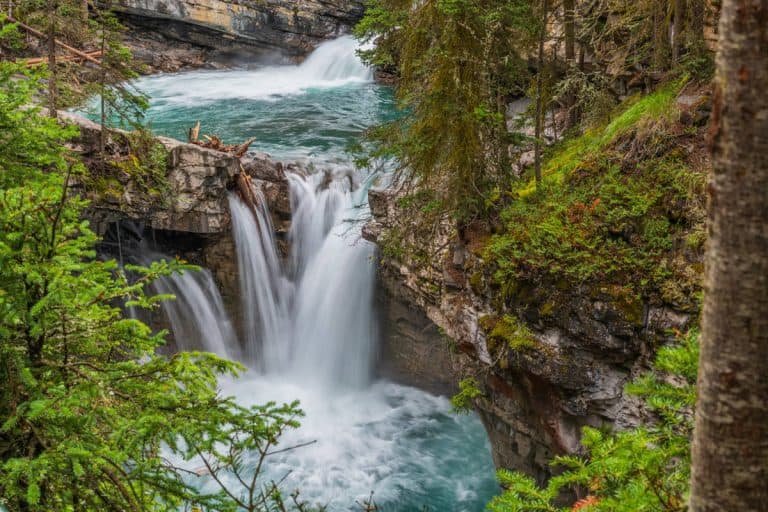
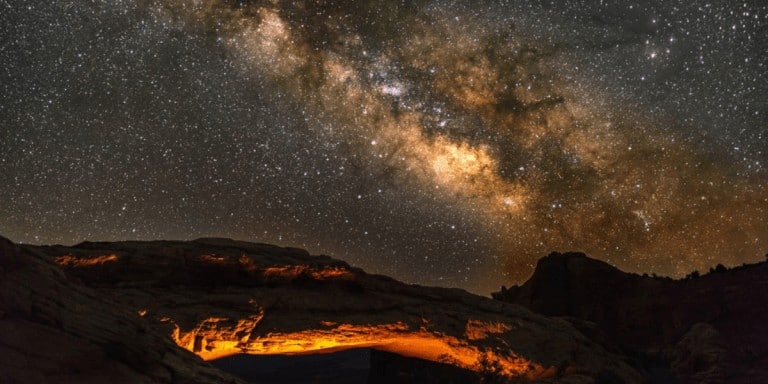
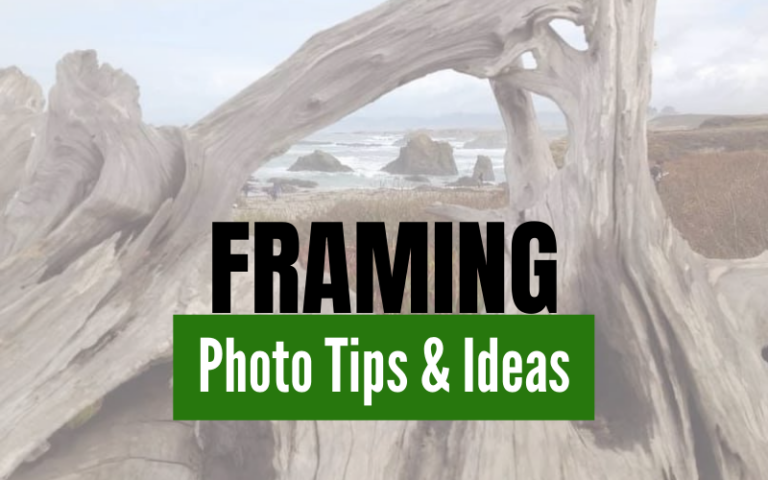
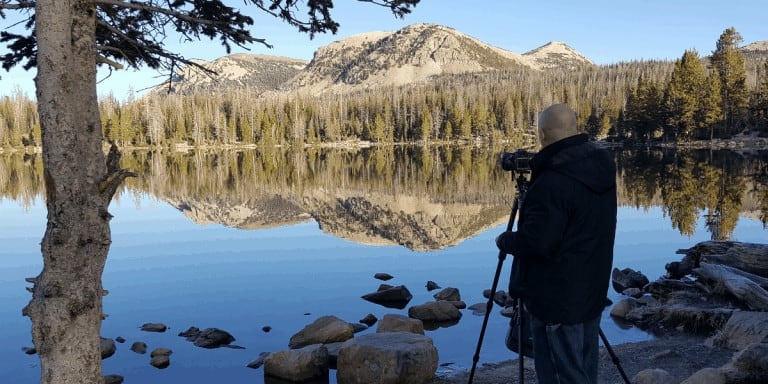

What do you focus on, the reflection or the subject?
It all depends on the scene, reflection, and subject – which one stands out to you as the most important element? This article might give you more tips/ideas as well: https://photojeepers.com/reflection-photography-ideas-tips/
I zoom on the object because the reflection will never be sharp
I want to know what is the appropriate metering to be used while capturing reflection? Do I need to make it spot or center weight or matrix metering? And one more thing, what is the aperture value should I use, more than f/7.1?
Thanks in advanced 🙂
Dave always uses the matrix metering for reflections. The aperture depends on how much light and depth of field you want. He generally shoots with smaller apertures like 11 to 16 for reflections.
Do you use any filters ?
I rarely use filters. I do on occasion use a circular polarizer if shooting during the day in bright sunlight, and I will use a neutral density filter when shooting moving water to assist in capturing blur effects.
When I shoot reflections photos it is always during the golden hour for the soft light and because I have found water reflections to be more clear during those early and late hours. Let me know if you have any other questions. -Dave
Nicely elaborate the reflection photography tips.
Thanks david
Thank you – photographing reflections is so fun and rewarding!